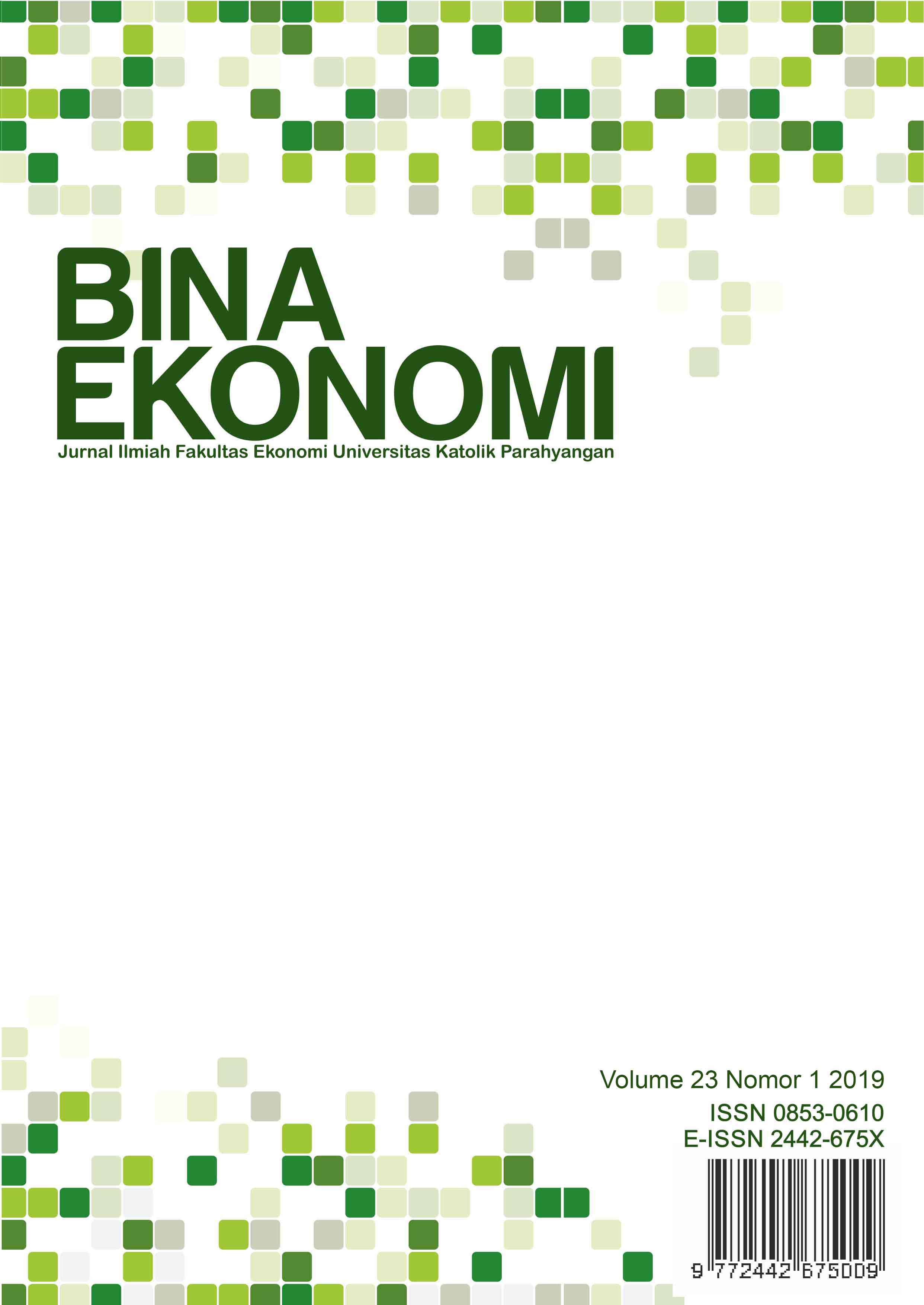KETIMPANGAN PENDIDIKAN DAN PENDAPATAN DI INDONESIA
DOI:
https://doi.org/10.26593/be.v23i1.3886.29-38Abstract
Abstract
This study aims to determine the factors of educational and income inequality decreased in Indonesia. Several factors affect education inequality and income inequality such as government spending in education and urbanization. The data used are secondary data in the form of panels for the period 2010 to 2017 as many as 33 provinces in Indonesia. The research method used is 2SLS (two stage least squares) with fixed effects selected as the best parameter estimation method. The results of this study explain income inequality is influenced by education inequality variables and income inequality lag, which is significantly positive while per capita economic growth and urbanization variables do not have a significant effect on income inequality that occurs in Indonesia. While educational inequality is influenced by government spending in education and urbanization with a significant negative effect and lag of educational inequality has a significant positive effect on educational inequality. The income inequality has an insignificant effect on educational inequality.
Keywords: income inequality; educational inequality; 2SLS
References
Badan Pusat Statistik (BPS). Statistik Indonesia 2010-2017. Jakarta
Birdsall, N., Ross, D., & Sabot, R. (1995). Inequality and growth reconsidered: Lessons from East Asia. The World Bank Economic Review, 9(3), 477-508. Diambil kembali dari http://www.jstor.org/stable/3989851
Digdowiseiso, K. (2009). Education inequality, economic growth, and income inequality: Evidence from Indonesia, 1996-2005. MPRA Paper No. 17792. Diambil kembali dari https://ssrn.com/abstract=1602642. doi:10.2139/ssrn.1602642
Foldvari, P. & Leeweun, B. V. (2011). Should less inequality in education lead to a more equal income distribution?. Education Economics, 19(5), 537-554. doi:10.1080/09645292.2010.488472
Gregorio, J. D & Lee, J. W (2002). Education and income inequality: New evidence from cross-country data. Review of Income and Wealth, 48(3), 395-416. doi:10.1111/1475-4991.00060
Gujarati, D. N. (2003). Basic Econometrics. McGraw-Hill International Editions. Singapore.
Jun, Y., Xiao, H., & Xiaoyu, L. (2009). Educational inequality and income inequality: An empirical study on China. Frontiers of Education in China, 4(3), 413-434. doi:10.1007/s11516-009-0022-1
Lee, J. -W. & Lee, H. (2018). Human Capital and Income Inequality. ADBI Working Paper 810. Tokyo: Asian Development Bank Institute. Diambil kembali dari https://www.adb.org/publications/human-capital-and-income-inequality
Li, H., Squire, L. & Zou, H. F. (1998). Explaining international and intertemporal variation in income inequality. The Economic Journal, 108(446), 26-43. doi:10.1111/1468-0297.00271
Long, C. -H. (2015). The nexus of income gap, economic growth and educational inequality in China. International Conference on Management Science & Engineering (22th). (hal. 1771-1778). Dubai.
Mahmood & Noor. (2014). Human capital and income inequality in developing countries: New evidence using the gini coefficient. Journal of Entrepreneurship and Business, 2, 40-48.
Mayer, S. E. (2010). The relationship between income inequality and inequality in schooling. Theory and Research in Education, 8 (1), 5-20. doi:10.1177/1477878509356346
Pangkiro, H. A. (2016). Analisis pertumbuhan ekonomi dan kemiskinan terhadap tingkat ketimpangan di Provinsi Sulawesi Utara. Jurnal Berkala Ilmiah Efisiensi, 16(1), 339-351.
Psacharopoulus, G. (1977). Economics of education: An assessment of recent methodological advances and empirical result. Soe. Sci. Inform, 16(314), 351-371. doi:10.1177/053901847701600304
Ram, R. (1984). Population increase, economic growth, educational inequality, and income distribution. Journal of Development Economics, 14(3), 419-28. doi:10.1016/0304-3878(84)90069-5
Rodríguez-Pose, A. & Tselios, V. (2009). Education and income inequality in the regions of the European Union. Journal of Regional Science, 49(3), 411-37. doi:10.1111/j.1467-9787.2008.00602.x
Saputra, D., Syechalad, M. N., & Nasir, M. (2015). Analisis ketimpangan pendidikan terhadap pertumbuhan ekonomi di Provinsi Aceh. Journal Ilmu Ekonomi, 3(2), 1-9.
Thomas, V., Wang, Y. & Fan, X. (2001). Measuring education inequality: Gini coefficient education. Policy Research Working Paper No. WPS2525, 1. Diambil kembali dari http://documents.worldbank.org/curated/en/361761468761690314/Measuring-education-inequality-Gini-coefficients-of-education
United Nations Development Program. (2016). Inequality of Education in ASEAN 2016. UNDP.
Wahyuni, R. N. T., & Monika, A. K. (2016). Pengaruh pendidikan terhadap ketimpangan pendapatan tenaga kerja di Indonesia. Jurnal Kependudukan Indonesia, 11(1), 15-28.
World Bank. (2016). Achieving education for all by 2015: Simulation result for 47 low-income countries. Washington DC: The International Bank for Reconstruction and Development / The World Bank.


